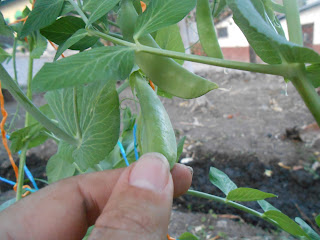Well, I think it’s time again for the
annual “what I’m thankful for” blog post.
Last year everything was timed nicely so that my whole training group
got to eat Thanksgiving Dinner at the Peace Corps Country Director’s house the
night before our swearing-in ceremony.
This year, I will be enjoying a turkey sandwich in a nearby city,
celebrating the fact that I am done teaching for this year, and school’s out
‘til February! Here we go with the
thankfulness:
- · I am thankful for my host family. They make me laugh, make me food, and treat me like another part of the family. My host siblings like to tell people I’m their sister, and my host mom once said to my host dad when I came home from being away for the weekend, “Your oldest daughter is home.” I have an excellent living situation, which is something that can really make or break your Peace Corps service.
- · I am thankful for my host niece. Because you can’t help but smile when you’re hanging out with an adorable 5-month-old. And when she stays over, she pretty much always sleeps through the night, which is excellent for me because she sleeps in the room next to mine.
- · I am incredibly thankful for my Peace Corps friends. It’s hard for anyone who is not here living this crazy experience to really understand what we’re going through. The friendships I’ve formed with these people are deeper than most others, and I wouldn’t have made it this far without their funny texts, shoulders to cry on, encouraging words, and the adventures we’ve had together.
- · I’m thankful for my family and friends back home. Though we don’t talk often, I’d like to think they’re thinking about me every once in awhile, and I know they’ve got my back. And I’m so grateful for the opportunity to come home for Christmas and New Years (thanks mom and dad!)
- · Last but not least, this year has not been an easy one for me, and I can tell you that on December 31st, I am more than happy to say goodbye to 2013 once and for all. However, I have learned to be grateful for difficult moments. While we’re going through them, they may seem like the worst thing ever, but in this past year I have learned how strong of a person I actually am, and I know now that I can get through whatever challenge is thrown my way. For that, I am thankful.
So, enjoy your turkey, stuffing, and
pumpkin pie. I’ll be here in
Nicaragua taking a 90-minute bus ride just to enjoy a turkey sandwich and a
beer. And maybe some ice cream for
dessert. I didn’t want to be cliché
and write about how living in a developing country has made me thankful for
things like always having food on the table, running water, a roof over my head, etc. But keep in mind those things
tomorrow. We have a lot to be
thankful for.








































